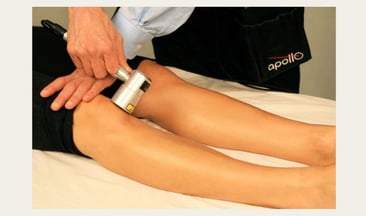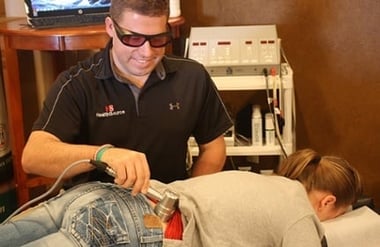Are you interested in offering low level laser therapy but aren’t sure where or how to start? ChiroEco’s Dava Stewart provides a quick guide for DCs interested in adding this service to their practices.
This article was written by Dava Stewart as "Learning the basics of low level laser therapy" for Chiropractic Economics on June 12, 2014 and can be found here.Low level laser therapy (LLLT) devices have been around for about 30 years and have received approval from the U.S. Food and Drug Administration (FDA) for the use of temporary pain relief. To receive FDA approval, clinical data demonstrating the effectiveness and safety of a device must be presented and evaluated.
 LLLT treatment is non-invasive, painless, and usually completed in 15-minute increments. Patients have less pain, and DCs offer an additional service—it’s a win-win.
LLLT treatment is non-invasive, painless, and usually completed in 15-minute increments. Patients have less pain, and DCs offer an additional service—it’s a win-win.
There are challenges, of course...
As with any new treatment, there is a learning curve. DCs who want to consider offering LLLT will need to learn how the therapy was developed, why it works, how the equipment operates, how to bill for the service, and more. Then there is the up-front cost of the equipment.
Possibly one of the most daunting challenges regarding LLLT is learning about the parameters and protocols used to treat various conditions. Intensity, pulse, and length of time are all factors in LLLT protocols. Although incorrect settings may not harm a patient, the therapy will not be effective. Making sure the laser penetrates to the tissue that needs to be treated and that it is intense enough to be effective are keys to providing pain relief.
As more studies are completed and technology continues to advance, determining the correct parameters is becoming easier for DCs. Many LLLT lasers have specific protocols preset and others have internal databases that allow practitioners to look up the protocols as needed. Scientists are still learning exactly why LLLT works on the cellular level, but many studies have shown that proper protocols can make the difference between effective treatment and on-going pain.
 LLLT has proven to be a safe therapy for many populations, including special populations such as pediatric and elderly. Patients with chronic conditions such as Bell’s Palsy have been shown to respond positively to LLLT, as have those with conditions such as carpal tunnel syndrome.
LLLT has proven to be a safe therapy for many populations, including special populations such as pediatric and elderly. Patients with chronic conditions such as Bell’s Palsy have been shown to respond positively to LLLT, as have those with conditions such as carpal tunnel syndrome.
Practitioners who are interested in LLLT have many options for learning about the training, equipment, and development of the therapy. Many laser companies (including PHS Chiropractic) offer seminars, webinars and classes, and often the time spent can be used for continuing education credits. Learning about new techniques and technologies, whether ultimately implemented in a practice or not, is one way that DCs help patients.
Want more? Check out our archived webinars below to learn more about our Apollo low level laser therapy system


